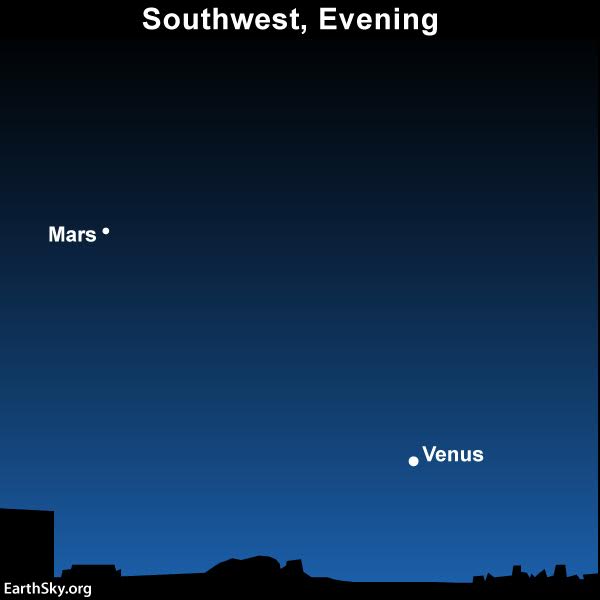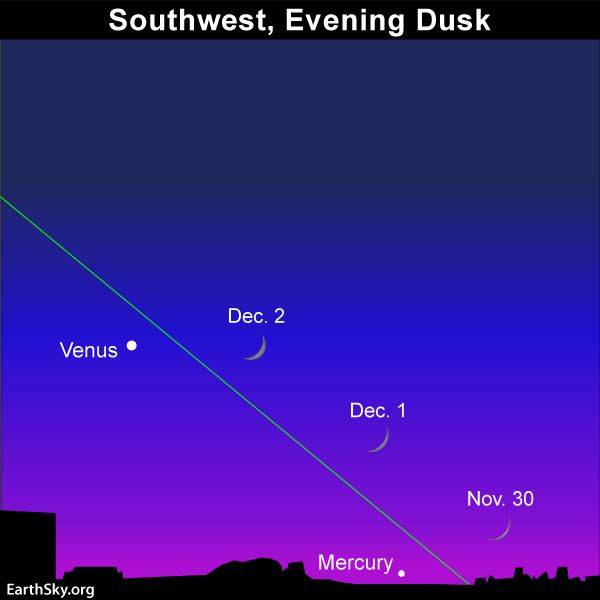Tonight – November 30, 2016 – if your western horizon is clear and unobstructed, you might find the moon and Mercury below dazzling Venus in the sunset direction, for a brief time after the sun goes down.
Everyone in the world has a chance to see it, but we’ll all see it oriented slightly differently with respect to the horizon … and we’ll all see the moon closer to or farther from Mercury than others in other parts of the world. The chart at the top of this post, for example, shows the view from mid-northern latitudes in the Americas. At mid-northern latitudes in Europe, the planets are similarly positioned, although the moon sits closer to the horizon.
That means, after sunset November 30, we expect the tiny sliver of the very young waxing crescent moon to be easier to see from North America (and Hawaii) than at corresponding latitudes in Europe.
But don’t worry too much about these differences! Just know that – no matter where you are – you’ll want to look for the moon and Mercury on November 30 shortly after the sun goes down, very near the spot the sun set.

From northerly latitudes, the planet Mercury is not that easy to catch. You’ll want to bring along your binoculars, in case you want to scan for the moon and Mercury in the glow of evening twilight.
On the other hand, Venus – the sky’s brightest planet – blazes in the west after sunset. It’s very bright and easy to see, and should pop out some 20 minutes (or sooner) after sunset. Once you spot Venus, try hopping from Venus to Mercury – drawing an imaginary line between Venus and the spot on the horizon where the sun went down.
Click here for almanac recommendations; an almanac can help you find setting times for the moon and Mercury in your sky.
In North America, on November 30, the moon sets after Mercury; south of the equator – in South America – Mercury sets after the moon. From mid-northern North American latitudes, you might see the moon – but not Mercury; in southern South America, you might see Mercury – but not the moon. At and near the equator, the moon and Mercury set at nearly the same time, so this could be the good spot to see the both the moon and Mercury after sunset on November 30.

Far and away – of all the places in the world – the Southern Hemisphere has the advantage for seeing Mercury in the evening sky. At temperate latitudes in the Southern Hemisphere, Mercury sets approximately one and one-half hours after the sun. At mid-northern latitudes, on the other hand, Mercury sets about one hour after sunset. From the Southern Hemisphere, especially from New Zealand and Australia, look for the close pairing of the waxing crescent moon and Mercury in your western sky after sunset December 1.
Mercury is climbing away from the glare of sunset day by day, to reach its greatest angular distance from the setting sun on December 11, 2016. If you miss the moon and (or) Mercury after sunset November 30, try again on December 1.

Bottom line: We’ll be eager to find out how many EarthSky readers will catch the moon and Mercury at evening dusk on November 30, 2016! Let us know – and post your photos – in the comments below.











